One of my favorite times of the year is the fall! The weather cools down and the colors of fall are in full bloom. I look forward to the leaves changing to beautiful reds, brilliant oranges, and bright yellows, and to visiting local Farmer’s Markets for their end-of-year harvest. Fall is also the time of year to freshen up the plants in your flower beds and pots with colorful fall flowers.
When the planters around my house start looking tired and the plants become a little leggy, I like to replace them with a variety of mums, pansies, and asters for a fresh pop of color. Add some pumpkins, gourds, and a bale of hay and you have a beautiful fall setting on your porch, patio, or in your garden.
What are some of the best fall flowers to plant?
- Chrysanthemums (Mums)
- Asters
- Crotons
- Purple Kale
- Pansies
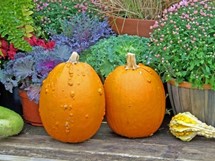
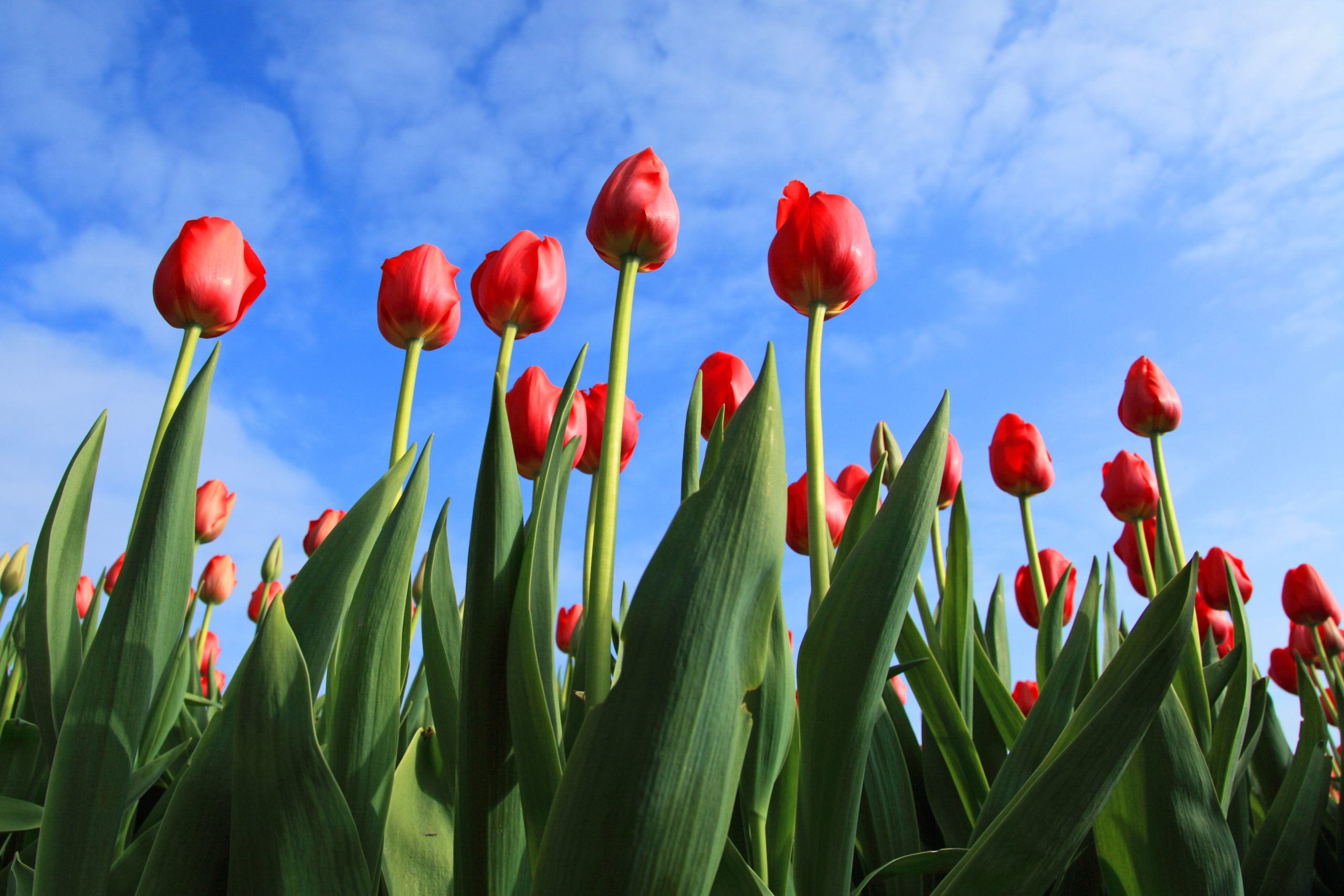
Wondering what else you can do with your flower beds this fall? Plant a beautiful spring flower garden!
We are quickly approaching the time of year to start planning for spring flowers. Whether you shop online, visit nurseries or local hardware stores to purchase spring bulbs, a little planning will pay off with beautiful flowers to enjoy next spring and for many springs to come. Here are some tips for planting and caring for your bulbs.
Where do you purchase bulbs?
- I recommend visiting a local nursery. Local nurseries have a variety of bulbs on hand that have been stored properly for peak blooming. They also have experts available to recommend bulbs for peak performance and blooms that will flourish in your garden.
- Another great resource is online nurseries that specialize in growing and selling bulbs. Make sure you are using a reputable supplier who is known in the industry and has great reviews. Online nurseries have some of the best quality bulbs and usually have more unique varieties.
- I have also purchased bulbs at big box, grocery, and hardware stores. They tend to be the most economical but they have a limited variety of bulbs to choose from.
What should you look for when picking your bulbs?
- Look for healthy-looking bulbs that are not soft, moldy, or spongy.
- Smaller bulbs are usually less expensive, but they also tend to give you fewer flowers.
- Look for larger bulbs which usually give you more flowers, but they can be more expensive.
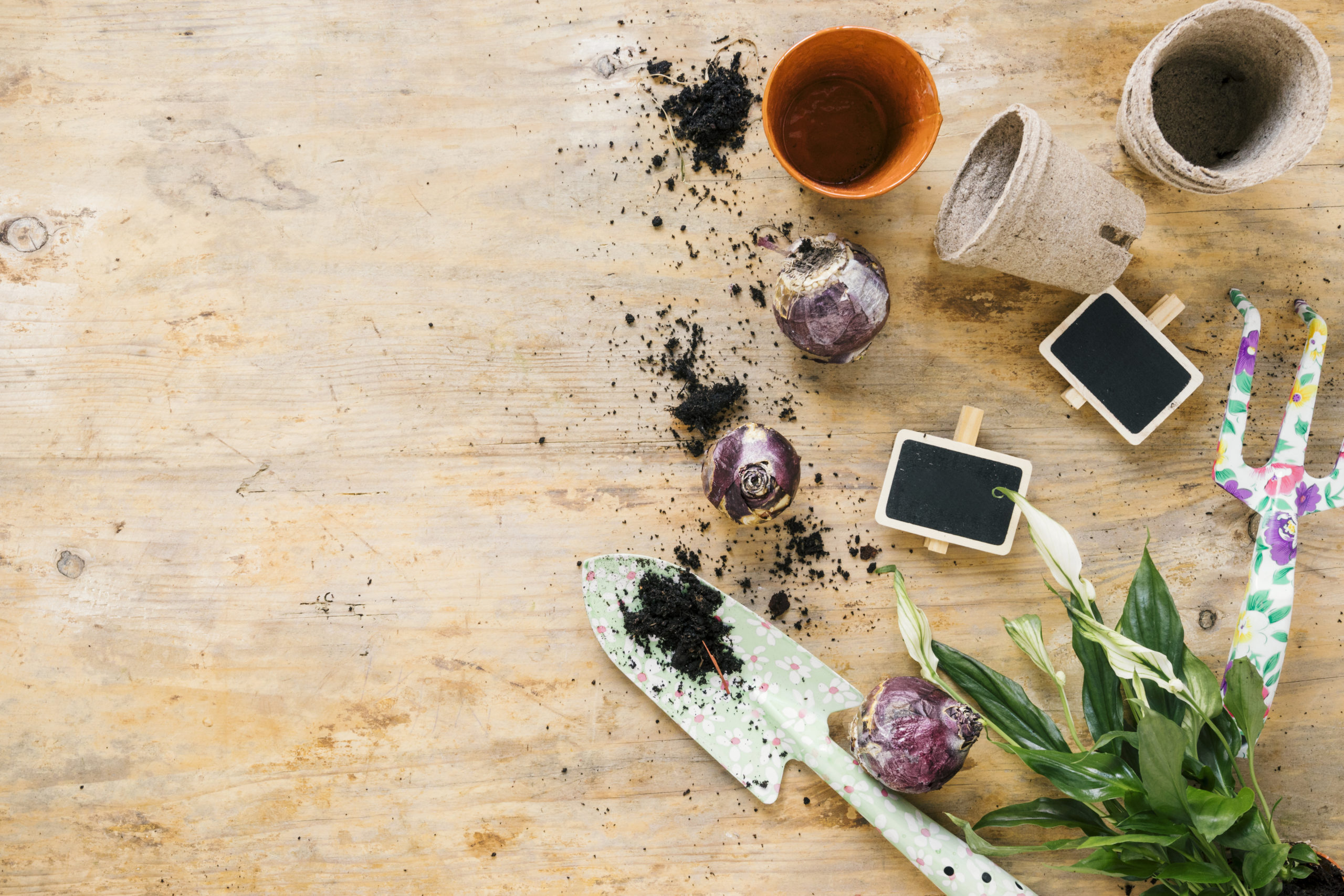
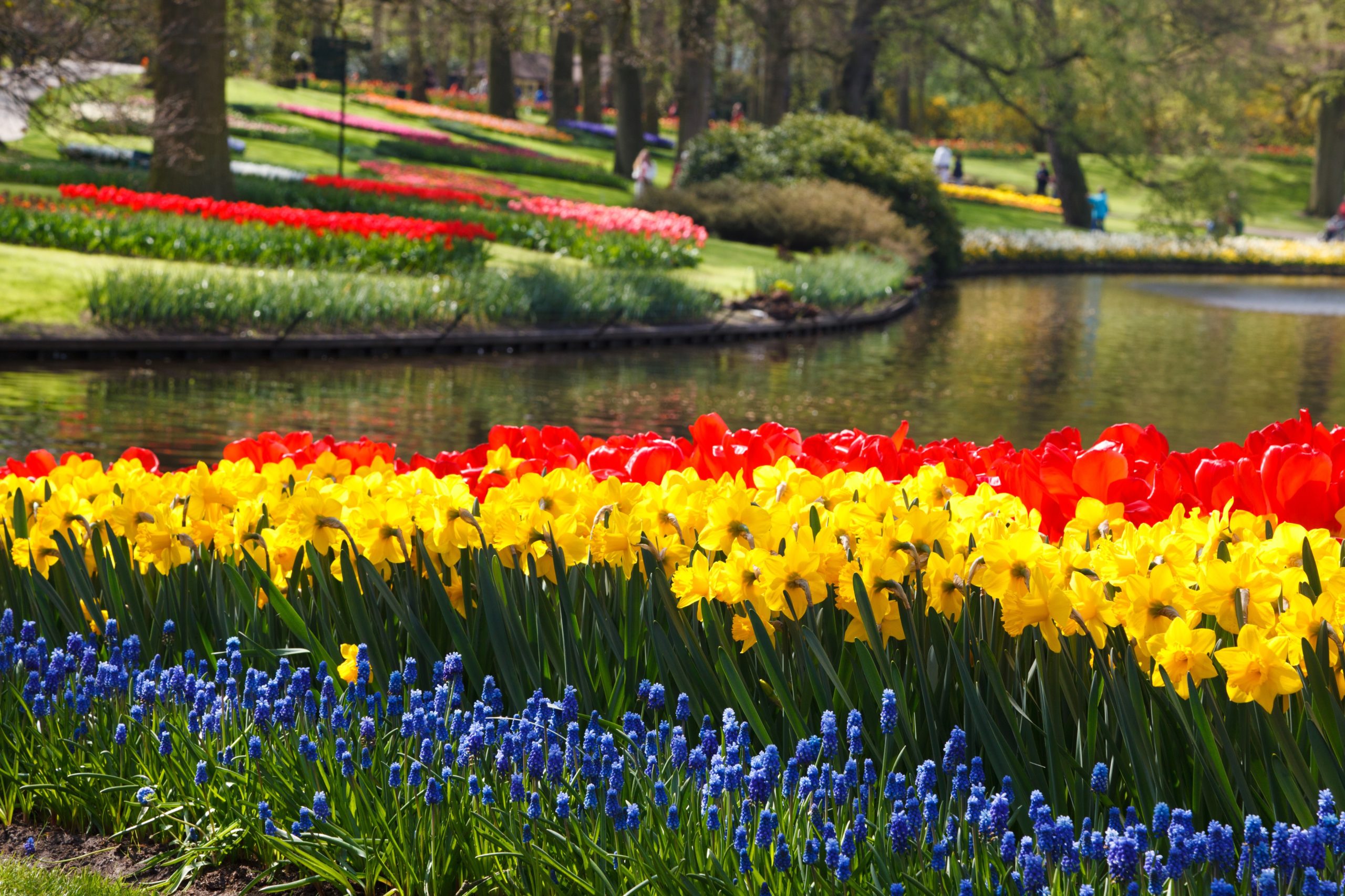
Examples of spring bulbs available now:
- Narcissus
- Crocus
- Tulips
- Daffodils
- Alliums
When is the best time to plant your bulbs?
- Wait until the night temperatures are consistently around 40 – 50 degrees and the ground has not become frozen yet.
- I’ve been told that the time to plant your bulbs is “when you no longer hear the crickets sing at night.”
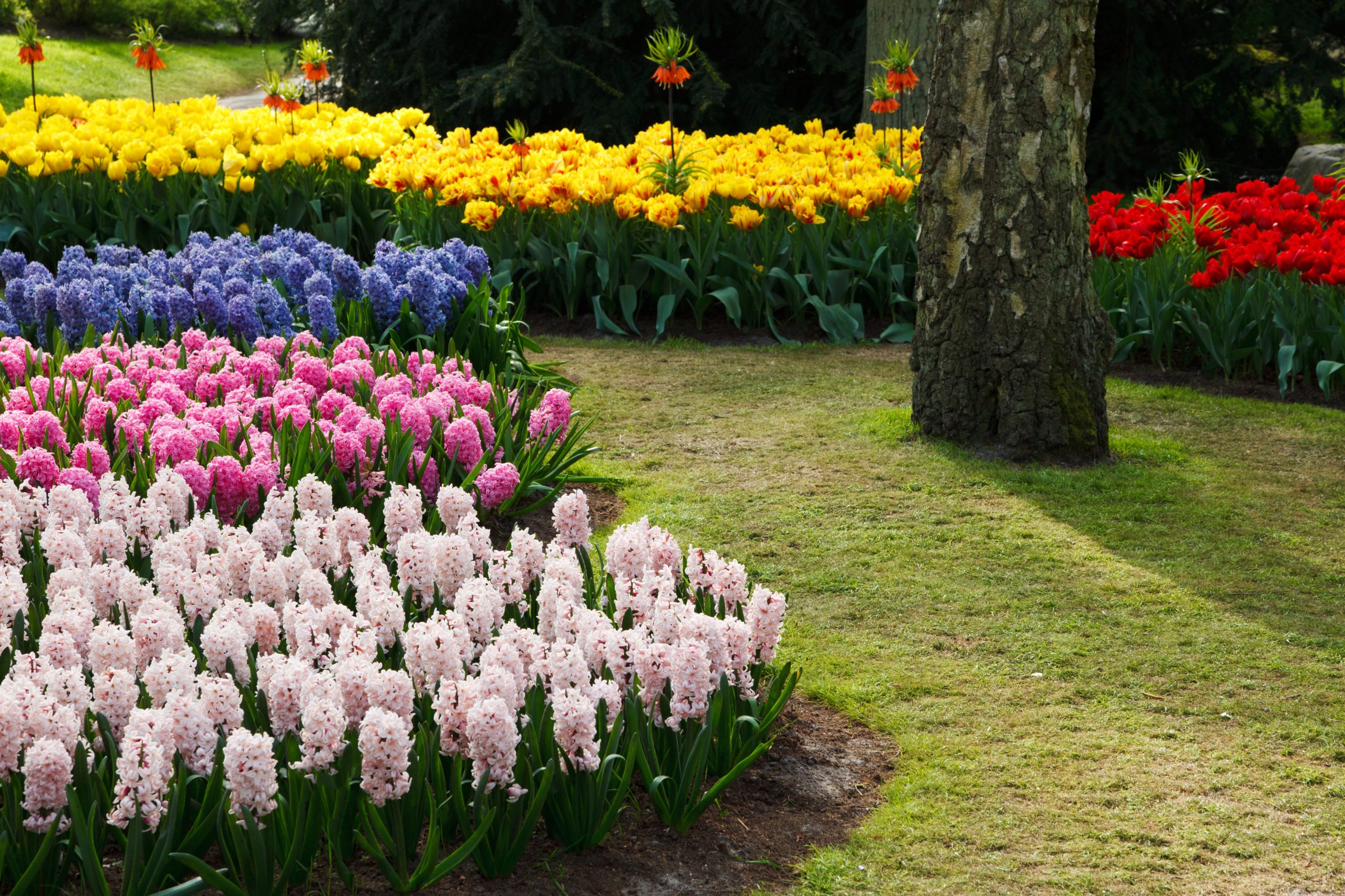
Where should you plant bulbs?
- Bulbs like sunshine and well-drained soil. Consider what the area will be like in the spring and early summer before planting in that location. If the soil is too wet, the bulb could rot, die, or not produce flowers.
- Consider what the location’s sun exposure will look like in the spring. You may have an area that is shaded in the summer, but in the spring the trees have not produced their foliage, and the area may be a great spot for spring flowers.
What can you do to help bulbs grow and produce blooms?
- Prepare the location to help encourage growth. I recommend using a blend of bone meal worked into the soil to help with root growth.
- When planting the bulb, sprinkle some bulb fertilizer in the hole to help fertilize your future plants.
- Dig the hole three times the depth of the size of the bulb, and each hole 2-3 inches apart. Don’t worry about being too exact on the depth, bulbs tend to self-adjust over the years to their best depth. If you are uncertain, refer to the instructions on the packaging.
- Plant the bulbs with the point going up and the roots down. If you are not sure what side should go up or down on the bulb, plant it sideways. The roots will go down and the stems should find their way up.
- For visual impact, plant several bulbs together. I like to plant bulbs in groups of at least 7-11 bulbs in a circular grouping.
- Be creative! You can plant your bulbs in groups by similar types, like colors, or by height of the blooms. I’ve seen some beautiful displays with smaller plants upfront (crocuses), medium blooms in the middle (hyacinths) and the tallest blooms (tulips or daffodils) in the back. This can add interest to the visual presentation in your spring garden and extend the blooming time within the grouping. Vary the colors of the flowers and you will have a great pop of color next spring.
- Water the bulb after planting and then water no more than once a week until the ground freezes. The bulb should be fine over the winter – Mother Nature should take care of this for you.
What do you do after the plants finish blooming?
- When the blooms are done, do not cut off the stem until the plant has turned brown and withered. Your plants will be healthier for years to come if you allow them to die back and photosynthesize, sending energy back into the bulbs.
- Here’s a tip for those who don’t like the look of dying stems. When the plants have finished blooming and start looking wilted, fold them in half and tie a bow around the stem using raffia. I think it improves the look of the dying plants and it makes me smile seeing them dressed up in my garden!
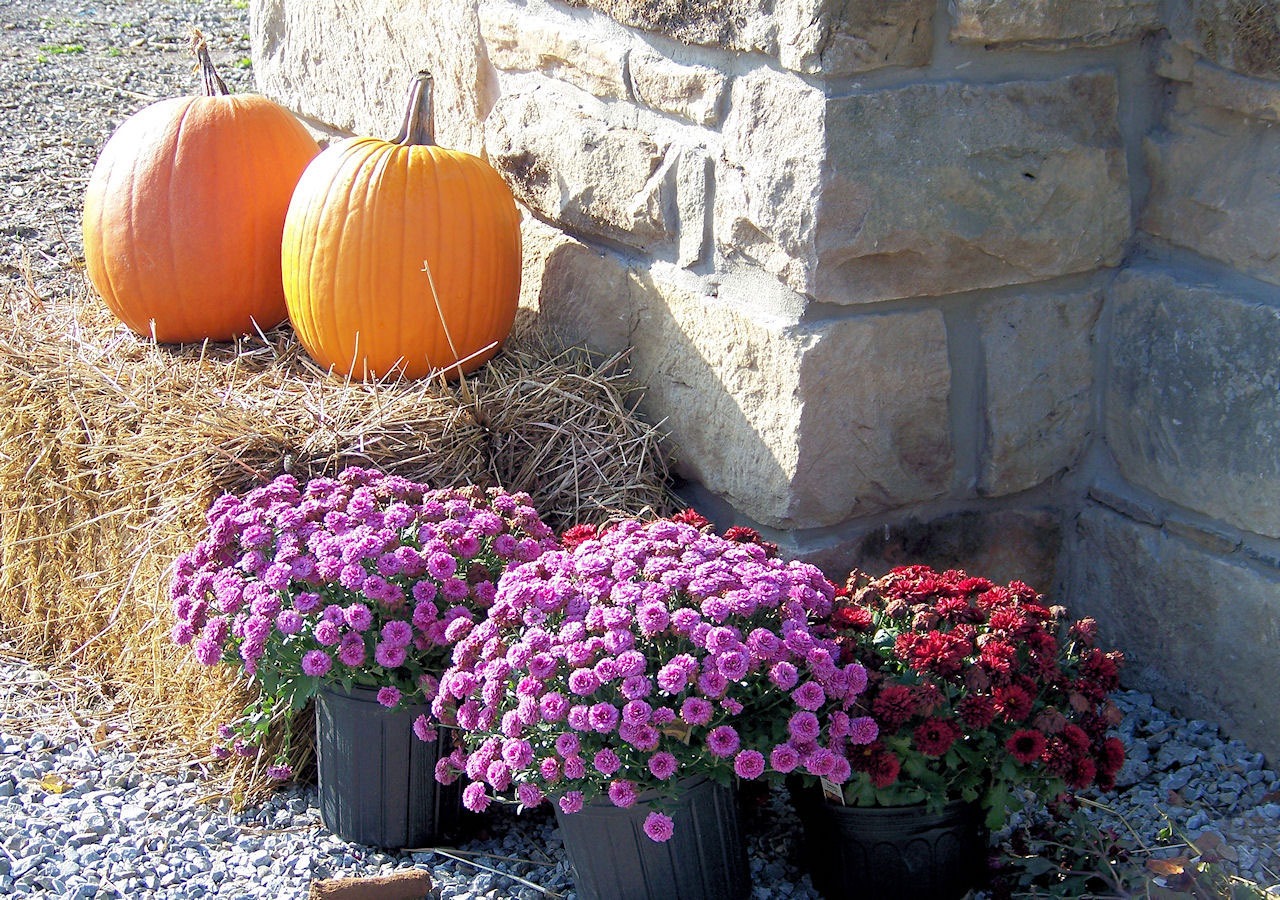
Preparing for Winter
I have been asked if I cut back my dead plants in the fall or leave them until spring. I personally limit what I remove from my garden beds in the fall. Plants that need to be removed due to disease or those that will become unruly in the winter are mostly what I remove. I’m more in favor of leaving the plants in my garden beds to provide food and/or shelter for birds and other small animals who winter in our area. Spring will be here soon enough and you will have plenty of time to cut them back then.
Fall can be one of the prettiest and most rewarding times of year for gardeners. Get out into your garden and enjoy the beauty around you. A little planning and work now will pay off with many months of beautiful blooms ahead.
Karen Devereux is a Fishers resident of 16 years and an Advanced Master Gardener and member of Hamilton County Master Gardener Association. Along with gardening (her favorite plants are basil, lavender, Russian sage, roses, salvia, and daisies), she loves to travel, visit the Fishers Farmers’ Market, hike and bike around Fishers, and spend time with her friends on her patio. She volunteers with the HSE High School Horticultural Class in their greenhouse, as well as at Guerin Catholic High School in their garden. Her favorite thing about gardening is that you never stop learning, along with the fun and interesting people she has met through the organization and while volunteering in the community. She has been married to her husband, Timothy, for 35 years and they have two grown children, Ian and Lauren, and two very well-fed cats.
If you are interested in becoming a Master Gardener, you can find more information on the Hamilton County Master Gardener Association website, along with information about gardening that is very helpful for all levels of expertise.

